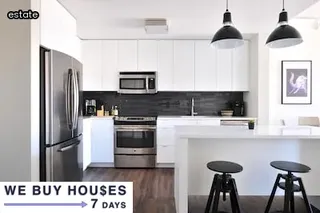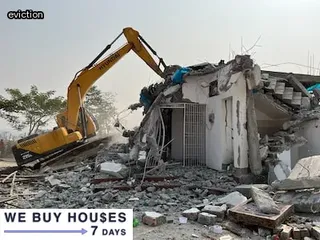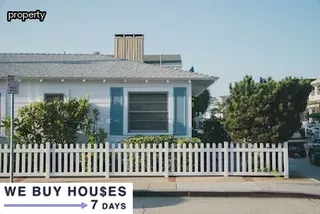It is important for landlords and tenants in South Dakota to understand their respective rights and responsibilities when it comes to tenant damage to property. According to the South Dakota landlord-tenant laws, a tenant can be held accountable for any damages that have been caused intentionally or negligently to the rental unit or any of its contents.
Landlords are expected to provide a safe, habitable living space for their tenants and must make all necessary repairs or improvements within a reasonable amount of time. Tenants, in return, should take proper care of the rental unit and its contents while they are residing there.
If any damage is done, it is ultimately the responsibility of the tenant to repair or replace the item at their own expense. In some cases, if a tenant has caused more than $500 worth of damage, they may be evicted from the property with little warning and no right to return.
Ultimately, both parties should strive to maintain an understanding and respectful relationship throughout the tenancy period so that disputes can be avoided wherever possible.

In South Dakota, it is important for both landlords and tenants to understand the requirements of a lease in order to protect their rights. Landlords must ensure that all tenants are aware of their rights and responsibilities under the lease agreement.
Tenants must be familiar with their obligations, such as paying rent on time, abiding by the terms of the agreement, and maintaining the property in a safe and clean condition. Additionally, tenants must be aware of any potential damage to the property that they may be responsible for if it occurs during their tenancy.
If a tenant is found liable for damages, they may need to pay for repair or replacement costs. Landlords can also require security deposits from tenants as protection against any potential damage to the property that may occur during the tenant’s residence.
It is important for both parties to understand these laws so they can work together in an equitable manner throughout their tenancy.
When signing a lease agreement, tenants in South Dakota are entitled to certain protections and rights when renting a property. This includes a basic level of habitability, which means the landlord must provide living space that is safe and meets certain health and safety standards.
These standards include providing adequate heating, plumbing, lighting, ventilation, and sanitation. As part of the agreement with the landlord, tenants should also expect to have working locks on all doors and windows as well as functioning smoke detectors within their unit.
Additionally, the property must be free from any hazardous or dangerous materials such as lead paint or asbestos. If these conditions are not met or maintained by the landlord throughout the rental period, tenants may be able to take legal action against them for breach of contract.

It is important to inspect a rental unit before moving in to ensure that the property meets your standards and any existing damage is documented. Landlord-tenant laws in South Dakota allow you to review the condition of the rental unit, its amenities, and surrounding area before signing a lease or rental agreement.
Start by ensuring that all safety features are functioning properly, such as smoke detectors, carbon monoxide monitors, and fire extinguishers. Check for signs of damage like water spots on walls or ceilings, holes in walls or floorboards, and broken windows.
Be sure to document all existing damages with photos and videos so it will be easier to make an insurance claim if necessary. Additionally, ask about the age and use of any appliances provided with the unit as this will help you understand the expected wear-and-tear over time.
Finally, talk to neighbors about noise levels and other issues that may arise during your tenancy. By doing a thorough inspection of a rental unit before moving in, tenants can feel confident that their rights are being respected under South Dakota landlord-tenant laws.
In South Dakota, landlords are limited in their ability to charge for security deposits. According to state law, the landlord may only collect a maximum of two months' rent as a security deposit from any tenant.
This deposit can be used to cover unpaid rent or damage caused by the tenant, but it cannot exceed two months' rent. The landlord must also provide a written statement of the condition of the rental property within 14 days of receiving the security deposit.
The statement should include descriptions and estimates of any existing damages, which will then be compared with the condition upon move-out in order to determine whether any deductions should be taken from the security deposit. Furthermore, South Dakota law requires that landlords return unused portions of security deposits within 30 days after the tenant moves out.
If they fail to do so, they are liable for up to three times the amount of the security deposit plus reasonable attorney fees if legal action is taken against them.

Tenants in South Dakota have certain obligations to their landlords and protections under the law. When renting a property, tenants are expected to obey laws concerning health and safety, maintain the property in good condition, and not interfere with the other tenants' right to quiet enjoyment.
To ensure tenant compliance, landlords may include provisions in rental agreements to protect the property from damage or destruction due to negligence or intentional acts. Tenants also have the right to enjoy their living space without interference from landlords or other tenants.
This includes protection from disturbances such as unwanted visitors or loud noises that would prevent tenants from having a peaceful environment. Landlords must respect these rights and take reasonable steps to ensure that all tenants have a safe and peaceful living environment.
Furthermore, tenants are protected from any retaliatory actions taken by landlords if a tenant attempts to exercise their rights under quiet enjoyment laws.
In South Dakota, landlords have certain obligations and rights when it comes to tenant damage to property. Landlords must ensure that the rental property is maintained in a habitable state and provide a written lease agreement that outlines the duties of both parties.
Landlords must also inform tenants of any known defects or hazards before entering into a lease agreement. On the other hand, landlords are entitled to receive timely rent payments from their tenants, as well as compensation for damages caused by the tenant’s negligence or misuse of the premises.
Additionally, landlords have the right to take legal action against tenants who have not fulfilled their contractual obligations and may be able to recover damages for any costs incurred for repairs due to tenant negligence. Lastly, South Dakota landlords have the right to request proof of liability insurance from their tenants as an additional form of protection from potential damages caused by them.

When a tenant damages property, South Dakota landlord-tenant laws permit the landlord to terminate the tenancy and pursue further action. The legal process to do this must be carefully followed in order to legally remove the tenant from the premises.
In most cases, the landlord must give proper written notice of termination to the tenant and also provide an opportunity for them to cure any violations of their lease agreement. If they fail to do so, then the landlord can proceed with eviction proceedings.
Another reason for tenant termination is if rent has not been paid for a certain period of time. Landlords are required by law to give written notices that payment is due before proceeding with any further legal action.
This may include allowing for a short grace period before taking action. Lastly, if tenants have violated any terms of their lease agreement then landlords may choose to end their tenancy as well.
It is important for landlords and tenants alike to understand South Dakota’s laws regarding tenant damage so they can ensure all parties remain in compliance with applicable regulations.
Before signing a lease, tenants should ask questions to understand their rights and responsibilities as they relate to South Dakota landlord-tenant laws. It is important for tenants to make sure they understand the rules regarding damage to property, such as what types of damage are considered normal wear and tear versus negligence that requires repair or replacement by the tenant.
Tenants should also find out what remedies are available if the landlord does not take responsibility for damages caused by their failure to maintain the premises. Additionally, tenants should determine if there are any restrictions on making alterations or improvements to the rental property that could potentially lead to damage, such as painting or installing fixtures.
Being aware of these points ahead of time can help ensure a smooth tenancy experience in South Dakota.

When searching for a rental property online, it is important to remain vigilant and avoid falling victim to rental listing scams and frauds. To ensure you are protected, research the landlord or property management company in South Dakota before signing a lease agreement.
Check if they are licensed with the state’s Department of Housing and Urban Development (HUD) and make sure they have a good reputation by reading reviews from past tenants. Also, take extra precautions when providing personal information like your social security number or banking information as this could be used for identity theft.
Additionally, if the landlord requests payment upfront or via wire transfer, it’s likely a scam. Lastly, always review the lease agreement carefully; never sign an agreement that does not contain details about South Dakota’s landlord-tenant laws and regulations regarding tenant damage to property.
In South Dakota, landlords are required to provide their tenants with certain disclosures. These include information regarding the tenant’s rights and obligations, such as any applicable late fees or rules governing pet ownership.
Landlords must also disclose which of the services they provide – such as maintenance, repairs, or cleaning – will be covered in the rental agreement. Additionally, landlords must inform tenants of their responsibilities when it comes to any damage they may cause to the property.
Finally, landlords must make sure that all tenants receive a copy of the lease agreement and any other relevant documents before signing. In this way, both parties understand exactly what is expected of them and can plan accordingly.

In the state of South Dakota, landlords must adhere to specific regulations when calculating and returning security deposits. According to the South Dakota Codified Laws, landlords are allowed to deduct from a tenant's security deposit for damage done to the property that goes beyond normal wear and tear.
Additionally, landlords may also use the security deposit for any unpaid rent or other charges due under the lease agreement. However, deductions can only be made if they are specified in the written lease agreement between landlord and tenant.
Landlords are obligated to provide written notice of deductions prior to returning a tenant’s security deposit within 30 days after termination or expiration of tenancy. This notice should include an itemized list of damages for which deductions were taken out, as well as any remaining balance left over from the initial security deposit amount.
Tenants can dispute any deductions listed in this written statement by providing evidence or proof that such damages were not caused by them. If it is found that a landlord wrongfully withheld part or all of a tenant's security deposit, then South Dakota law allows tenants to file a lawsuit against their landlord in court.
In South Dakota, tenants have the right to file a small claims lawsuit against their landlord if they believe they are entitled to damages. These damages may be due to a breach of contract, improper maintenance or repair of the property, or other issues relating to the tenancy agreement.
If a tenant believes that their landlord has caused them harm through negligence or wrongful action, they can seek compensation in court. In order to do so, the tenant must first understand their rights and responsibilities under South Dakota law and ensure that their claim is filed correctly.
This includes gathering evidence, submitting relevant documents, and understanding how small claims lawsuits work in South Dakota courts. Before filing a lawsuit against a landlord in South Dakota, it is important for tenants to consult with an experienced attorney who can help them understand the applicable laws and proceed with confidence.

In South Dakota, it is the responsibility of the landlord to determine the amount of compensation for damage to property caused by tenants. The compensation is based on the actual cost of repairing the damage or replacing damaged items.
Landlords must provide an itemized list of damages and costs associated with them when requesting payment from tenants. If a tenant wishes to contest any damage fees charged by the landlord, they have 15 days to submit a written dispute to their landlord, who in turn has 30 days to respond and provide proof of repair/replacement costs.
Any necessary repairs should be made by qualified personnel within a reasonable period of time and at a reasonable cost, unless the tenant agrees otherwise in writing. In cases where landlords wish to pursue legal action against tenants for nonpayment, they must provide evidence that all related laws have been followed including notification requirements and other relevant regulations.
When it comes to landlord-tenant laws in South Dakota, it is important for both landlords and tenants to understand their respective rights and obligations. In the event of a lease agreement breach, landlords can take legal action against the tenant.
Examples of tenant breaches include non-payment of rent or damage to property beyond normal wear and tear. Understanding the state's landlord-tenant laws can help both parties protect their interests and provide clarity on the remedies available for each side if a breach occurs.
South Dakota law requires that all rental agreements must be in writing in order to be legally binding, and any changes or modifications must also be noted in writing. The terms of a lease should also specify when rent is due, what amount is owed, how late fees are calculated, and which party is responsible for certain repairs or maintenance.
Additionally, landlords have the right to inspect their properties with reasonable notice given to their tenants. If a tenant breaches their agreement by causing extensive damage to the property beyond normal wear and tear – such as holes punched in walls or broken windows – then the landlord has the right to demand payment for these damages according to South Dakota statutes.
Furthermore, if a tenant fails to pay rent on time as specified by their agreement with the landlord, then they may face eviction proceedings initiated by the landlord if no resolution is reached between both parties.

Evicting a tenant from a property in South Dakota is a process governed by state law. Landlords should familiarize themselves with the South Dakota landlord-tenant laws before taking any such steps.
Before evicting a tenant, the landlord must provide them with written notice that specifies the reason for eviction and the amount of time they have to vacate. A court order may also be necessary depending on the circumstances.
If a tenant fails to comply with their lease agreement or causes damage to the property, it is grounds for eviction. When damages occur, landlords should document the situation and take pictures if possible.
This can help substantiate their case should they seek legal action against their tenant. It is also important to consult an attorney prior to initiating any eviction proceedings in South Dakota as there are specific rules and regulations which must be followed in order for an eviction to be legally enforceable.
In South Dakota, landlords are required to follow a few key laws when it comes to rent increases. The South Dakota Codified Laws chapter 43-32 states that landlords must provide 60 days of written notice when increasing rent.
Additionally, the same code stipulates that landlords cannot raise rent in retaliation for a tenant exercising their rights protected under state and federal law, such as filing a complaint about an unsafe living condition. There is also a maximum limit on how much rent can be increased each year; this amount is determined by the local government of the county where the rental property is located.
It’s important for tenants to know their rights and understand what laws govern rent increases in South Dakota so they can make sure their landlord is abiding by them.

In South Dakota, nonpayment of rent can have a significant impact on the tenancy agreement and the landlord-tenant relationship. If a tenant fails to pay their rent on time, the landlord is allowed to terminate the tenancy with a three-day written notice.
This means that if a tenant does not pay their rent by the due date, they are at risk of being evicted from the property. Additionally, landlords are permitted to collect late fees and extra costs associated with any eviction proceedings which may arise from unpaid rent.
In addition to this, tenants may be held liable for any damage done to the property as a result of their failure to pay rent. In most cases, tenants are required to reimburse landlords for any repairs or damages that occur due to their negligence or malicious acts.
This highlights the importance of understanding tenant damage and how it could affect the tenancy agreement in South Dakota. It is important for both landlords and tenants to understand South Dakota's landlord-tenant laws and how they relate to tenant damage so that both parties can protect their rights while also maintaining a positive rental relationship.
In South Dakota, landlords are not permitted to carry out any illegal lockouts or utility shutoffs against their tenants. These types of behaviors are in violation of the law and can result in serious legal repercussions for the landlord.
Landlords must follow specific procedures when dealing with tenant damage to property before they can legally take any action. First, they must provide written notice to the tenant outlining why they intend to take action and how the tenant can resolve the situation.
The landlord is then required to wait 14 days before taking any further steps, such as changing the locks or shutting off utilities. If the tenant fails to meet their obligations during this period, then the landlord may be able to take further legal action, such as evicting them from the property.
It's important for landlords in South Dakota to understand their rights and responsibilities when it comes to dealing with tenant damage to property so that they don't inadvertently break any laws by carrying out illegal lockouts or utility shutoffs.

In South Dakota, terminating a month-to-month lease agreement requires both the landlord and tenant to provide proper notice.
Landlords must provide tenants with at least one full rental period’s notice prior to terminating the agreement, while tenants must provide landlords with at least seven days’ notice if they wish to vacate the property.
If either party fails to give proper notice, the other can take legal action.
The amount of time required for terminating a lease agreement in South Dakota may vary depending on whether or not it is written into the lease contract itself, so it is important for both landlords and tenants to be aware of their rights and obligations when it comes to ending a month-to-month tenancy.
Law 43-32-13 in South Dakota is a law that governs landlord-tenant relations when it comes to tenant damage to property. This law states that tenants must reimburse the landlord for any damage they have caused to the property during their tenancy, regardless of whether the damage was intentional or due to negligence.
The amount of reimbursement must be equal to the cost of repair or replacement of the damaged property, not including any costs associated with restoring the property to its previous condition. Landlords are required to provide tenants with written notice within 30 days of discovering any damage, specifying what repairs must be made and how much it will cost for those repairs.
Tenants are then given 30 days from receipt of this notice to make payment. If tenants fail to make payment within 30 days, landlords may pursue legal action against them in order to collect on unpaid damages.

In South Dakota, landlords must make repairs to rental units within a reasonable amount of time after a tenant reports damage.
This is usually set at 30 days by landlord-tenant laws in the state, though the exact timeline may depend on the severity of the damage and whether or not it is considered an emergency.
Landlords should also take into account the property's condition when deciding how quickly repairs need to be made; for example, if a piece of furniture needs to be replaced due to excessive wear and tear, the landlord may have more time before making repairs than with something that has been broken or damaged recently.
Tenants should keep records of all repair requests and follow-up with landlords when necessary in order to ensure that their landlord is following South Dakota's landlord-tenant laws regarding repairing damages.
When it comes to landlord-tenant laws, South Dakota is a landlord friendly state. Tenants have an obligation to keep the rental property in good condition, so they are financially responsible for any damage they cause while occupying the property.
Landlords are able to pursue a tenant’s security deposit if necessary to cover repair costs due to tenant damage. It is important for landlords and tenants in South Dakota to understand their rights and responsibilities when it comes to understanding tenant damage to property, so that both parties can protect their interests.
For example, landlords must provide written notice before making deductions from the security deposit, and must return any unused portion of the deposit within a specified time frame after the tenant vacates the unit. Additionally, landlords must maintain rental units according to applicable health and safety codes designed for public safety—even if this means going beyond ordinary wear-and-tear caused by tenants during occupancy.
Ultimately, South Dakota is a landlord friendly state with favorable rental policies that allow landlords to take action against tenants who fail to respect their obligations regarding damage done to rental properties.
In South Dakota, the landlord-tenant laws allow landlords to enter a tenant's property in some cases without permission. However, state law does require that the landlord give reasonable notice prior to entering the premises.
This notice must be given at least 24 hours in advance unless it is an emergency or there is an agreement between the landlord and tenant otherwise. With regard to damage caused to property by tenant, landlords have certain rights and responsibilities outlined in the lease agreement and South Dakota landlord-tenant law.
Landlords may still enter without permission if they have reason to believe that damage has been done or if they are assessing any damage already done. It is important for both landlords and tenants to understand their rights and responsibilities with respect to tenant damage of property so that disputes can be avoided or handled properly when necessary.
A: The maximum amount a landlord in South Dakota can charge for damage to their property caused by a tenant is equal to the amount of the security deposit.
A: Tenants are responsible for repairing any damage to the property caused by their own negligence or that of their guests. The tenant must also maintain and keep the premises in a clean and safe condition. If a tenant fails to do so, the landlord may terminate the lease or even begin eviction proceedings.